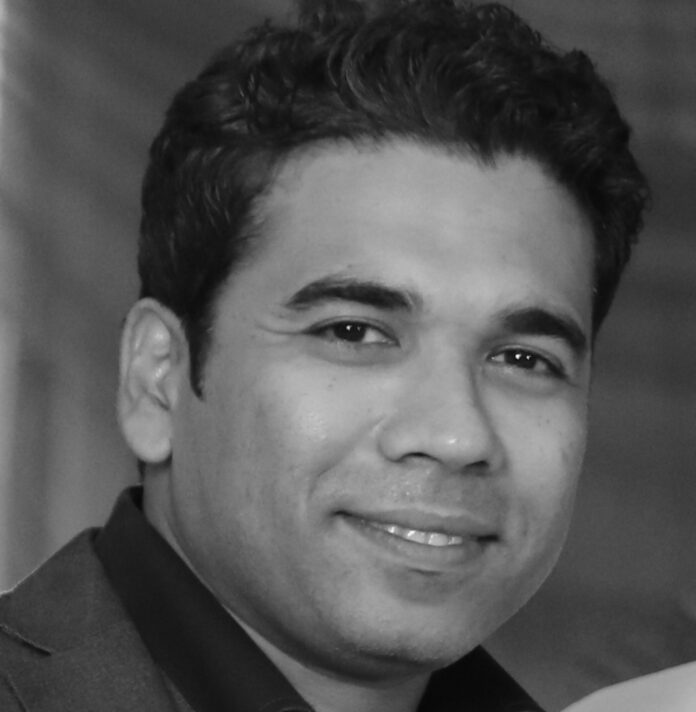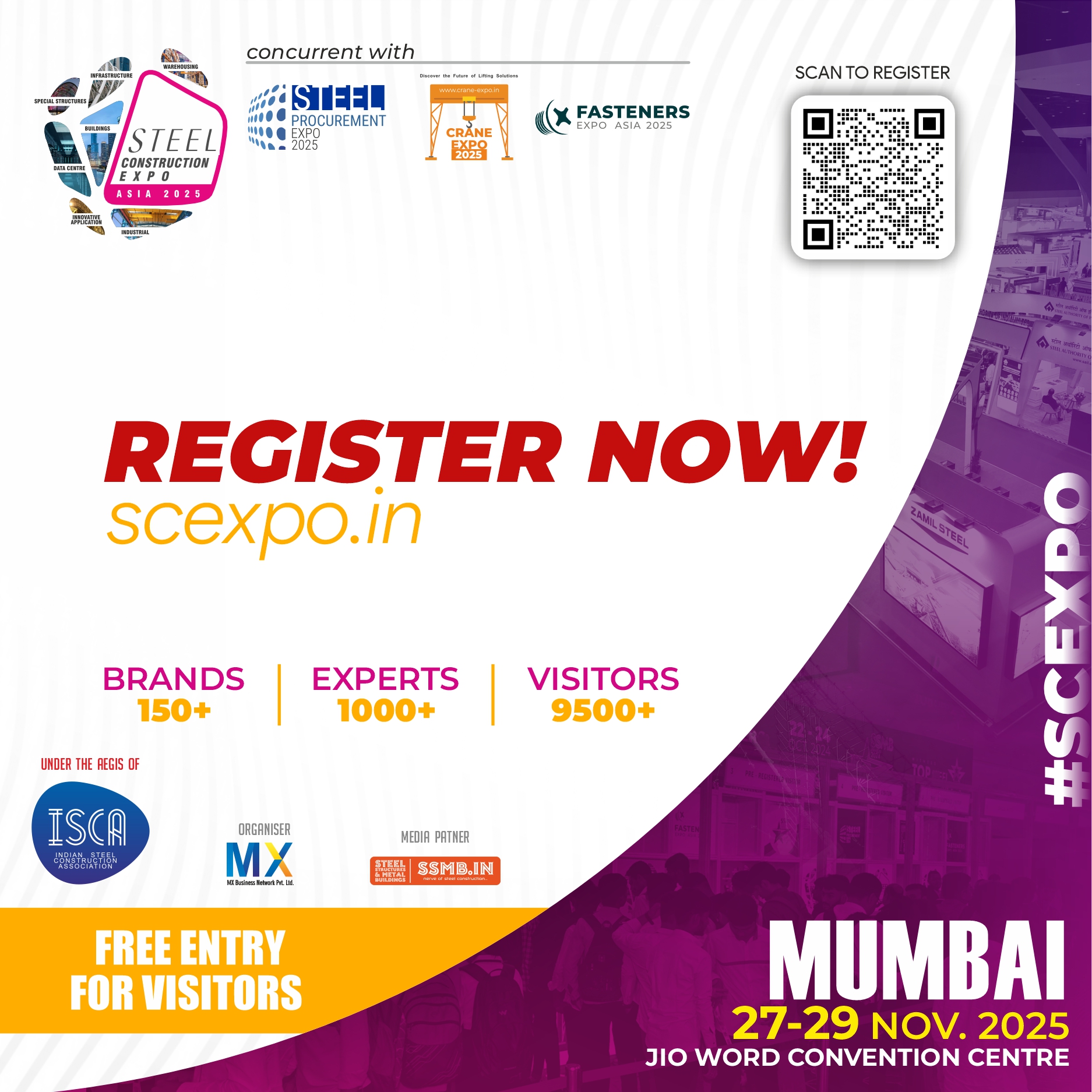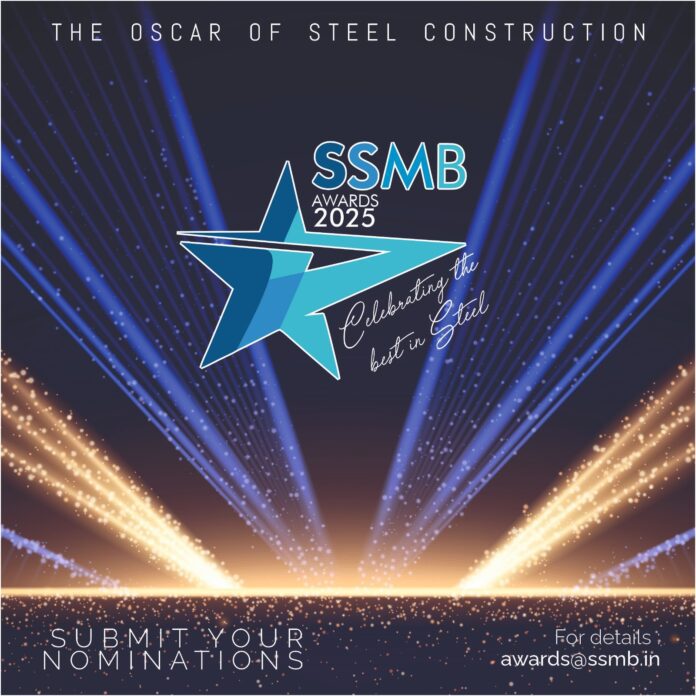Intro:
Known for translating context and user emotion into tangible form, NITHIN HOSABETTU, Design Director at IMK Architects, has been instrumental in shaping projects that marry architectural clarity with engineering precision. His work reflects a rare understanding of materials, especially steel as expressive elements that can transform both form and function. In conversation with SSMB, Nithin shares how iterative design, material intelligence, and sustainability converge to define a new architectural language rooted in purpose and people.
As Design Director, how do you define IMK’s core design philosophy, and how has it evolved under your leadership?
At IMK, our core belief is to design buildings where people thrive. Every project begins with a deep understanding of the user, their needs, aspirations, and how the space will interact with its larger context. We ensure the purpose and function of a place are clearly defined before giving form to it.
When we design, we pre-empt the sensory experience of the space, its materiality, texture, light, wind, and movement to craft environments that are both functional and uplifting. Sustainability remains integral to our practice; it is not an afterthought but a guiding principle that shapes every decision. Over time, this philosophy has evolved into a seamless blend of user-centric design and environmentally responsible architecture that exists in harmony with its surroundings.
When clients present complex or open-ended briefs, what process helps IMK convert functional requirements into innovation?
At IMK, we follow a system called Scrum, introduced by our Director, Rahul Kadri. Originally developed for the software industry, we have thoughtfully adapted it to architecture as an interactive, highly collaborative design process. It allows us to engage closely with the client and every key stakeholder from the very beginning.
We begin with a workshop that brings together all voices, from investors to on-site teams, to identify the most essential features the building must deliver. Here, we apply the 80–20 principle, focusing on the 20 per cent of elements that will create 80 per cent of the project’s impact. This ensures that our efforts are concentrated on what truly defines the project’s identity and purpose.
The design process then moves forward in short, two-week cycles known as design sprints. Rather than unveiling a complete design at once, we share progress regularly, encouraging continuous client feedback. This iterative approach maintains transparency, fosters ownership, and keeps creativity aligned with functionality.
As the design matures, collaboration naturally transitions from client-led discussions to more intensive coordination with consultants and technical teams. By then, the design intent is clear, allowing us to focus on precision and execution. This dynamic, feedback-driven process ensures that every concept we develop is innovative, purposeful, and deeply aligned with the client’s vision and functional needs.
“We design for people, not just for buildings — architecture must make life more livable.”
Steel has been central to several IMK projects. Could you share an example where it defined both structure and expression?
Steel has always been a material of immense intensity and versatility in our design philosophy. Over the years, we have used it not only as a structural component but as an expressive design element that shapes the identity of our buildings. In our office project in Selam, for instance, steel defines both, visual identity and scale of our project, bringing clarity and rhythm to its architectural form.
A recent and particularly meaningful example is the Malabar Hill Walkway, where the entire structure is supported by a slender steel framework. The design uses a minimal foundation system to preserve the ecological balance of the surrounding forest, one of Mumbai’s vital green lungs. The project has drawn wide appreciation for its sensitivity, technical finesse, and visual lightness.
We have also worked on landmark projects such as the Nehru Centre, an iconic structure that beautifully blends the solidity of concrete with the flexibility and elegance of steel. Across all our work, our focus remains on celebrating steel’s structural honesty using it not just as a means of construction, but as an architectural language that conveys lightness, rhythm, and modernity.
What best practices ensure seamless coordination from design to fabrication and execution?
The success of complex projects ultimately depends on clear communication, precision, and seamless collaboration. At our firm, we leverage Building Information Modeling (BIM) and a range of advanced design tools to articulate the design intent with accuracy right from the initial stages. This approach ensures smooth coordination between architectural design, structure, and building services, while providing a comprehensive vision of the final built form.
During design development, every project undergoes a process of value engineering, incorporating insights from specialists, consultants, and on-site execution teams. However, technology alone does not guarantee success. We place equal emphasis on human collaboration – our teams invest time in aligning design intent with on-site construction logic. Understanding how drawings translate into built reality remains, in our view, the most critical link in achieving excellence from design to execution.
Maintaining design intent on site is often challenging. How do you navigate that?
Maintaining design intent on site is one of the most demanding aspects of architecture. The key lies in partnering with the right contractor, someone who not only has technical competence but also appreciates the nuances of design. Not every contractor can translate complex architectural ideas into accurate shop drawings, so we actively guide our clients in selecting execution partners who understand and respect design integrity.
From there, the process becomes a two-way collaboration. We ensure clarity in communicating the design concept while being open to the contractor’s technical insights. Bridging the gap between creative intent and on-site practicality is crucial. The shop drawings are carefully reviewed and analysed to ensure that it reflects both the design vision and technical accuracy.
This constant exchange helps identify challenges early and refine details before execution. These drawings go through rigorous checks before approval, ensuring that what finally stands on site remains true to the original design. Through this hands-on coordination and proactive dialogue, we are able to preserve design integrity while achieving precision and quality in execution.
“Steel allows expression — an honest revelation of structure that becomes the architecture itself.”
IMK’s design process is deeply user focused. How do you anticipate and shape the end-user experience?
At IMK, our design philosophy places the end user at the heart of every decision. From the earliest stages, we study how people will move through and interact with the building, ensuring that every space feels intuitive, comfortable, and meaningful. The goal is to design environments that enhance daily life rather than merely accommodate it.
A defining element of our Scrum process is the Product Owner, who functions as the Project Lead. This role serves as a vital bridge between the client, end users, and the design team, representing the voice of the stakeholders. The Product Owner ensures that the design team concentrates on creating value-driven outcomes, not merely deliverables, while upholding the product vision and steering the project toward its successful realisation.
The SCRUM methodology further reinforces this mindset. Through iterative reviews, stakeholder feedback, and design sprints, we continuously refine the project. This cyclical, collaborative process ensures that the final outcome is not only functional and efficient but also deeply resonant with the people who inhabit it.
How do you nurture creativity and technical depth within your team?
Nurturing creativity and technical depth is integral to every design. I believe creativity doesn’t fade but evolves when guided by curiosity and discipline. Architecture demands both artistic intuition and scientific precision; it’s about transforming imaginative concepts into functional, enduring spaces.
We encourage a practical and reflective design culture where every idea is tested for constructability, purpose, and performance. Our teams constantly review and refine their work, aligning design ambition with engineering logic. Regular design reviews, internal critiques, and open discussions help us sharpen both creativity and technical rigour.
Mentorship plays a key role. We maintain a studio environment where senior architects guide younger designers through iterative feedback loops. This culture of collaboration, questioning, and shared learning ensures that creativity thrives within a framework of accountability and technical excellence, enabling every project to balance imagination with precision.
“Creativity thrives in structure. Innovation comes alive when discipline meets imagination.”
What key skill or mindset should young architects cultivate in today’s rapidly changing practice environment?
In today’s rapidly evolving landscape, architects must balance technology with tangible, real-world understanding. While AI and digital tools are transforming design and construction, their value depends entirely on how thoughtfully they are applied.
Young architects should focus on two key areas. First, master technology. Understand how digital modelling, automation, and data-driven design can enhance creativity and precision. But second, and equally important, is hands-on experience. Spending time on site teaches lessons that software never can, lessons like how materials behave, how structures come together, and how design decisions impact construction.
A deep grasp of materials, structure, and site realities, combined with the intelligent use of technology, builds architects who can think critically and lead confidently. It’s this synthesis of digital fluency and physical intuition that will define the next generation of architects.
Editor’s Note
In this edition SSMB delves into IMK’s evolving design culture, one that combines empathy with efficiency. Nithin’s perspective reveals how modern architecture must bridge the poetic and the pragmatic, using steel not merely as a material, but as a mindset toward flexibility, lightness, and longevity.
The IMK Approach
- Design Foundation: Human experience and site context drive every concept.
- Collaboration Model: Scrum-based, iterative, and stakeholder-led.
- Steel Philosophy: Structural honesty, lightness, and long-span adaptability.
- Tech Integration: BIM-enabled coordination and digital traceability.
- Sustainability: Passive design, low-impact materials, and long-life detailing.
| Lessons in Leadership
Nithin’s Principles for Modern Practice:
|




